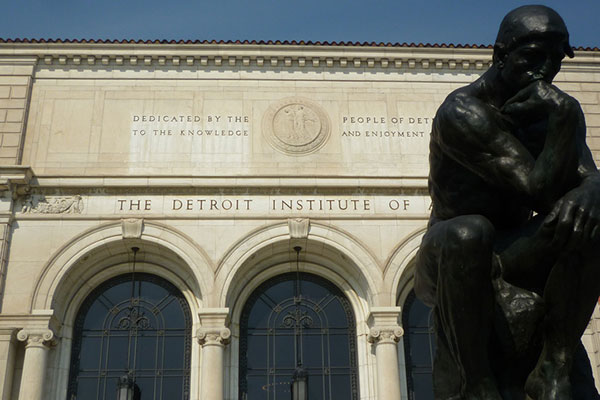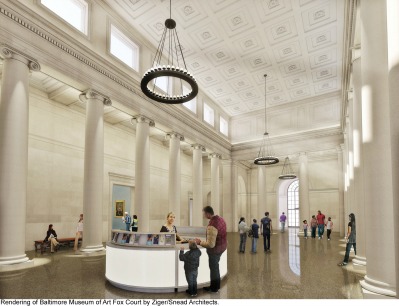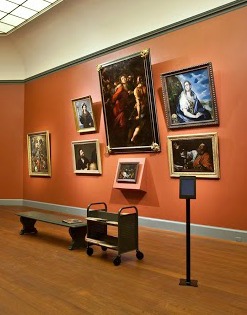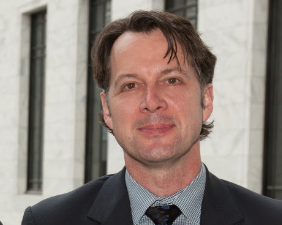For weeks now, no months, I’ve been struck by the magical thinking that surrounds the Detroit bankruptcy-Detroit Institute of Arts situation. People are asserting opinions and notions that they want to be, rather than looking at the circumstances that exist — on both “sides” of the issue, if I may characterize them as sides.
 That thought was behind an article I’ve written that is published in today’s Wall Street Journal, headlined Delusions in Detroit (though, truth be told, I’d have said Delusions About Detroit, because they’re not confined to the Motor City). My rationale:
That thought was behind an article I’ve written that is published in today’s Wall Street Journal, headlined Delusions in Detroit (though, truth be told, I’d have said Delusions About Detroit, because they’re not confined to the Motor City). My rationale:
These and other delusions are influencing decision-making, and that is a dangerous game. Before any decisions are reached, these half-truths and untruths must be shown for what they are and discarded.
I won’t elaborate on those in the article here — please just click on that link — because, believe me, several other things I had to say, or other pieces of my arguments, never made it into my article or are on the cutting room floor. Here are a few other points I wish I had had the space to raise:
- I don’t know enough about Michigan politics to understand why the governor rescued Belle Isle, an island in the Detroit River that is home to the aquarium, a yacht club and other attractions, but the state leased it from Detroit for 30 years. But nor do I understand why the terms of the deal were acceptable. It saves $6 million in costs to the city each year, but the state provides no revenues to pay down debt. Imagine if that deal had been extended to the DIA. Problem solved..
- Everyone seems to believe that the DIA can simply tour its collection to raise money, though proceeds would be pretty meager, as I write in the article, quoting two totals (one from the DIA’s own recent tours and one from the recent tour of masterpieces from Kenwood House). Need I remind people that such tours subject art works to inevitable wear-and-tear that might soon be intolerable? Any movement of paintings and sculptures involves risk to their integrity; too much movement is deadly. When I was at the DIA about 18 months ago, Graham Beal pointed out the toll on van Gogh’s Self-Portrait, the museum’s most-requested work. It just has to stay home for a while, and perhaps require conservation (unless that’s been done in the interim).
- Another method of monetizing the collection involves proposed partnerships between cash-rich museums and the collection-rich DIA, but as I point out the one between the Museum of Fine Arts, Boston, and Nagoya, Japan, achieves other purposes, but adds little to the MFA’s revenue stream. But here’s another reason to doubt the viability of this idea: Just last month, a deal between the Art Gallery of Western
OntarioAustralia and the Museum of Modern Art (details here) fell apart half-way through its three-year tenure — even though more than 230,000 people had visited the MoMA exhibitions since the series was launched last year. Citing high insurance costs and lower-than-expected ticket sales from the MoMA shows, the AGWA said the partnership was “no longer financially viable.†Here’s the letter from the museum’s director, Stephano Carboni, and here’s a report on it. - What about those for-profit groups that organize and tour money-making exhibitions, most notably the treasures from the tomb of King Tutankhamen show. Well, I couldn’t actual numbers for that show — which probably made profits as well as added revenues to the museums who showed it. Nonetheless, the stock of the company involved, Premier Exhibitions, Inc., sells for $1.14, close to its 52-week LOW of $1.03. Given that kind of loss in an up market, the outlook does  not look sound.
- A variation on the philanthropists’ rescue scenario would have rich Michiganders buy the DIA’s works and retain ownership, placing the treasures on “permanent deposit†at the DIA. This has an upside: At some point, the owners might become donors and reap an increased tax benefit if the work appreciates. But legally, there’s no such thing legally as a “permanent loan,†lawyers tell me. In recent years, British galleries have struggled to pay for paintings long on deposit from families of the Dukes of Sutherland and Rutland, for example, but put in play when the lending family decided it needed cash.
- A question for Emergency Manager Kevyn Orr and the governor, as they consider ways to get value from the DIA and, inevitably, harm it: Will any of the creditors dissolve if they don’t get paid, as the museum would?
- As I keep pointing out, yes, the passage of the millage rescued the DIA from financial jeopardy last year, but remember that the museum has no debt and operates in the black.
Confession: I have bouts of magical thinking, too: I wish that analyses like mine in the WSJ and this one would convince Orr to lower his sights regarding the “contribution” he expects from the DIA — or better yet drop the demand altogether. The creditors can take care of themselves, mostly, and alleviating pensioners’ distress depends on the long-term viability of Detroit, which is enhanced by the DIA, not on a fight now over a few dollars per person.
UPDATE: In my article, I refer to a panel at an event sponsored by the International Foundation for Art Research. It has now posted a video of the evening, here.






